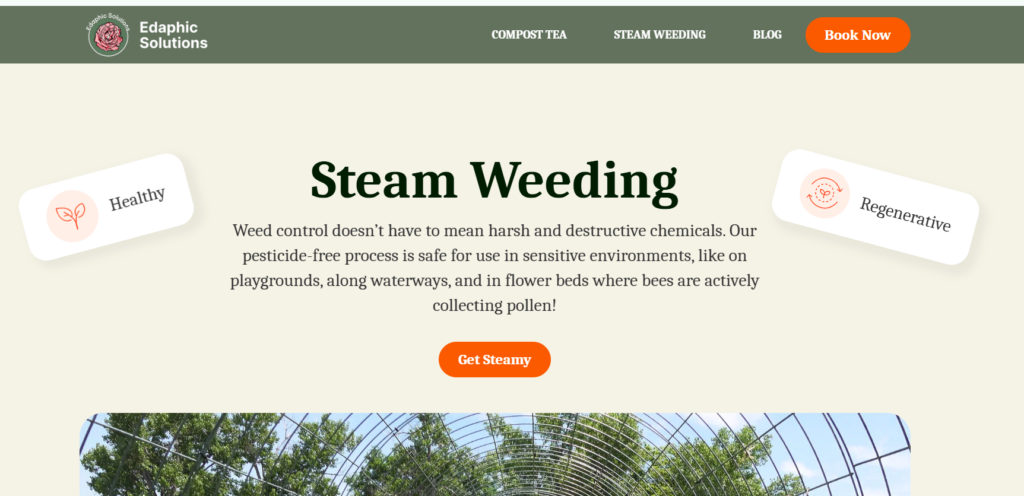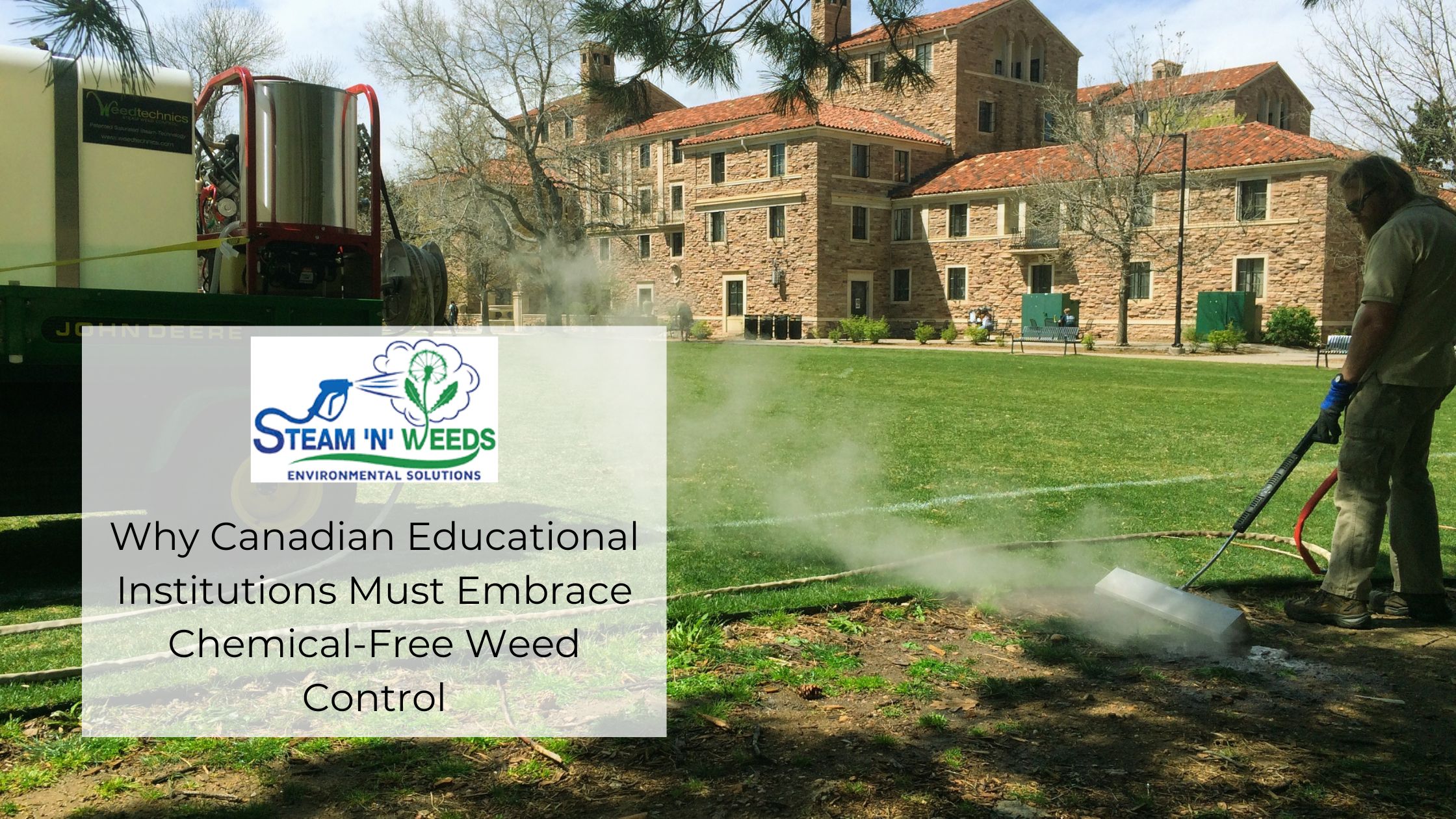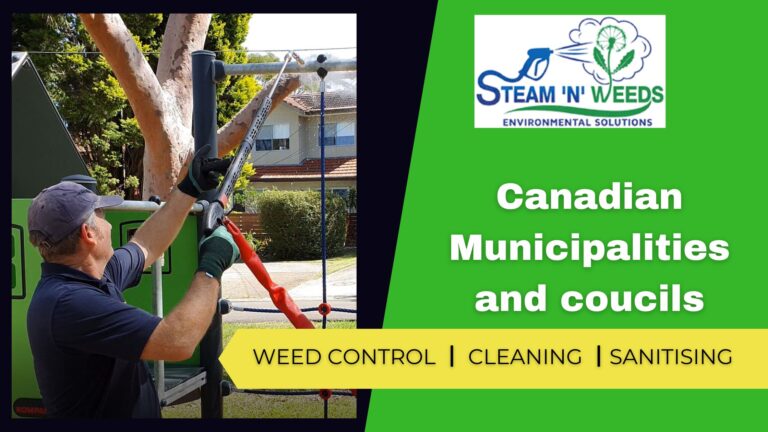Why Canadian Educational Institutions Must Embrace Chemical-Free Weed Control
Canada’s educational institutions, from sprawling university campuses to vibrant elementary schools, are more than just places of learning; they are integral parts of our communities. These spaces, frequented by children, young adults, and educators, deserve the utmost care and protection. Yet, the pervasive use of chemical herbicides, particularly glyphosate, poses a significant threat to these sensitive environments. It’s time for decision-makers to prioritize the health and well-being of our students and staff by transitioning to safe and sustainable weed control methods like saturated steam weeding.
The Glyphosate Question: A Risk to Sensitive Environments
Glyphosate, the active ingredient in many popular herbicides, has been the subject of intense debate and growing concern. While often touted as safe, numerous studies and legal cases have raised serious questions about its potential health impacts, particularly regarding its link to cancer . For sensitive areas like schools and universities, where children and young adults are particularly vulnerable, the potential risks associated with glyphosate exposure are simply unacceptable.
Children are more susceptible to the effects of chemical exposure due to their developing bodies and higher metabolic rates. Even low levels of exposure to herbicides like glyphosate can have long-term health consequences.
Moreover, the application of chemical herbicides in schoolyards and playgrounds raises concerns about direct contact with treated surfaces, as well as the potential for drift and contamination of surrounding areas. The potential impact on pollinators, essential to our ecosystem, is also a serious consideration.
The Ethical Imperative: Choosing Safety Over Chemicals
Educational institutions have a moral and ethical obligation to protect the health and well-being of their students and staff. Continuing to rely on chemical herbicides like glyphosate, despite the growing evidence of their potential harm, is a dereliction of this duty. Decision-makers must prioritize the precautionary principle, opting for safer alternatives even in the face of some uncertainty. The health of our children and the integrity of our educational environments should not be compromised for the sake of convenience or cost.
Saturated Steam Weeding: A Safe and Sustainable Solution
Saturated steam weeding offers a powerful and effective alternative to chemical herbicides. This innovative technology uses the power of moist heat to eliminate weeds without the use of harmful chemicals. The saturated steam penetrates the plant’s cell walls, disrupting vital physiological processes and leading to rapid wilting and death. Because it uses only water and heat, saturated steam weeding is safe for people, pets, and the environment.
How Satusteam™ Works: Targeted Weed Control for Educational Settings
Satusteam™ technology, developed by Weedtechnics, delivers saturated steam at a specific temperature and pressure, maximizing its weed-killing power while minimizing water usage. The moist heat penetrates deep into the plant, reaching the root system and ensuring effective weed control. Because it’s just water, the steam quickly dissipates, leaving no harmful residue behind. This makes it ideal for use in sensitive areas like schoolyards, playgrounds, and gardens.
Benefits for Educational Institutions:
- Uncompromising Safety: Eliminates the risk of chemical exposure for students, staff, and the surrounding environment.
- Environmentally Responsible: Protects pollinators, soil health, and water quality.
- Effective Weed Control: Provides long-lasting results against a wide range of weeds.
- Versatile Applications: Can be used in various settings, from lawns and flowerbeds to cracks in pavement and around trees.
- Reduced Liability: Minimizes the risk of chemical-related incidents and legal challenges.
- Positive Public Image: Demonstrates a commitment to student health and environmental stewardship.
Weedtechnics Machines in Action: Examples of Success





